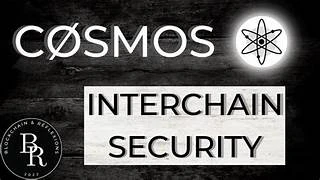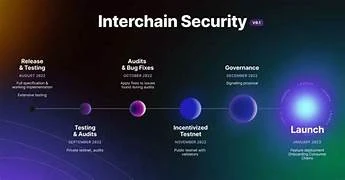
In the past week, Cosmos has just achieved a new milestone by successfully transferring Stride to Interchain Security (ICS). Despite this, the blockchain community is still having various discussions about this new model, especially regarding its effectiveness. In the following article, let's review the notable information about the Cosmos ICS model together.
Latest Update
On July 19th, Stride became the first active network on the Cosmos network to successfully migrate to the Interchain Security (ICS) system. By transitioning to this new mechanism, Stride will be able to leverage the security provided by the ATOM validator system.
This move is beneficial in terms of security, as the network will no longer use the native token of STRIDE for consensus validation, and the validators of the Cosmos Hub will be able to "rent" this validation process. Readers can find relevant information about the security mechanisms of Interchain Security in the article below.
It's worth mentioning that this is not the first consumer chain to utilize ICS. As early as May 2023, Neutron became the first official network to generate blocks on this security mechanism. Stride is a project that has already set a milestone of "successful replacement" in its previous operational state. This milestone indicates that if there are active networks on Cosmos that wish to change mechanisms, the ICS network will be secure.
The next consumer chain project expected to participate in ICS will be Duality.
Issues with ICS Mechanism
However, debate on the community arises as many Twitter accounts state that Cosmos is facing "dilemmas" in system design.
Specifically:
According to a report by Chronus One, small validators will not be able to cover the cost of verification operations with the current ATOM exchange rate and reward levels. As more consumer chains join the network in the near future, the cost issue will become more complex. The cost of running a Tendermint node is approximately $600 per month, with each consumer chain requiring validators to run a separate node.
However, implementing a "higher taxation" solution on chains that want to rent security from ATOM validators poses a barrier. This obstacle would create little incentive for projects to participate in the ecosystem. An example of this specific case in Cosmos is the redistribution of 15% of staking rewards to the Cosmos Hub.
If rewards are increased after every block on the network, ATOM will face issues of issuance and inflation.
Can different security mechanisms be a solution?
According to the documents shared by Cosmos, three different security mechanisms will be applied, including Replicated Security (which is considered the V1 version of the aforementioned Interchain security), Opt-In Security, and Mesh Security. To avoid getting into technical details, I will summarize the differences of these three mechanisms as follows:
Replicated Security: Validators must operate all nodes that support consumer chains.
Opt-In Security: Validators only choose to operate nodes of consumer chains they deem "economically beneficial." However, this will involve security trade-offs and may not be as robust as Interchain.
Mesh Security: Simply put, validator groups can delegate to another validator group of a different consumer chain for operation. When an authorized validator violates the consensus mechanism, the group authorizing that validator will also suffer economic loss, known as slashing.
Therefore, it can be seen that Cosmos has created two additional "leasing" mechanisms for authentication to address the aforementioned node operation cost issue. However, this solution (as described above) is not perfect as it sacrifices some security concerns and divides the network into specific "validator groups" for several consumer chains.

Cash flow solution?
The irony is that, for Cosmos, the phrase "all problems can be solved when prices rise" is the most complete solution. With the increase in ATOM prices, the income of validators will also increase, offsetting the fixed costs of running nodes. However, this is to some extent a "chicken or egg" game - without the network being established and without funding injection, economic problems cannot be solved, and there is no foundation for network construction.
In this section, I can only summarize some recent product infrastructure updates related to Cosmos. It should be noted that... the following information does not imply that funds will flow into the system to solve the above-mentioned problems.
In addition, Cosmos has integrated a circuit breaker module. This is seen as an emergency breaker that helps the Interchain ecosystem prevent risks from attackers.
As early as March 2023, Circle announced its support for USDC on the Cosmos network.
Regarding internal aspects, it can be mentioned that Osmosis Exchange announced a 50% reduction in token inflation rate, or the update of dydx involving product structure.
Conclusion
Therefore, we have learned about the latest updates on the ICS mechanism of Cosmos and the analysis of the problems faced by this ecosystem.
We hope the above content is helpful to you.










